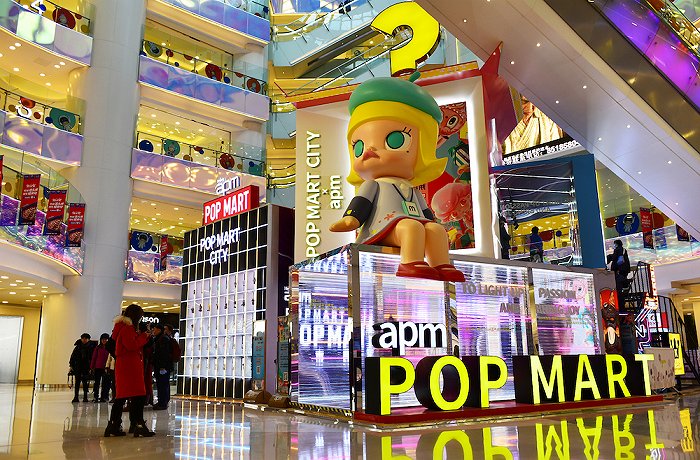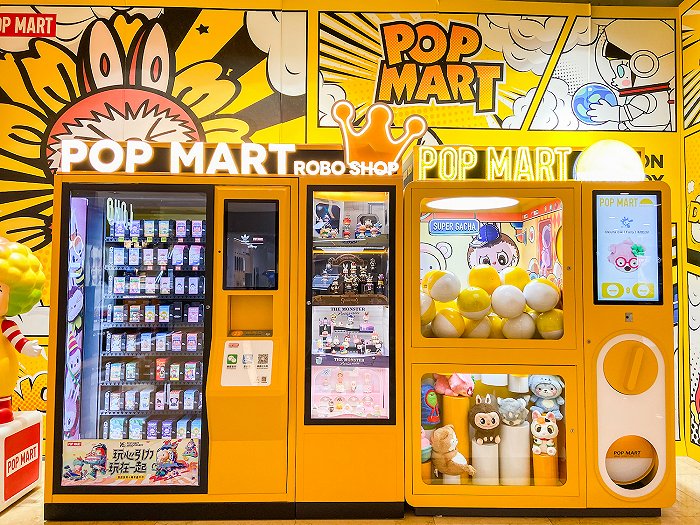Though blind boxes are a current fad, consumers’ recognition and loyalty of intellectual property will seal their destiny.

By MA Yue
When Pop Mart opened its first store at Beijing’s EC Mall a decade ago, few could have predicted that this unspectacular toy outlet would ultimately turn such a volume. Floated on the Hong Kong stock exchange, the mystery toymaker was valued at about US$7 billion. Shares opened for trading at HK$77.1 ($10), nearly double the initial offer price of HK$38.50.
Pop Mart’s revenue and profits have been on the rise since 2017. In 2018, its gross income of 515 million yuan was up 225 percent from 2017. The figure in 2019 hit 1.7 billion yuan. By June this year, Pop Mart had earned 818 million yuan in the first six months, pandemic notwithstanding. Net profit increased from 1.6 million yuan in 2017 to 450 million yuan last year.
The question now is how long can the “blind box economy” sustain this pace?

Pop Mart was established in 2010 when founder WANG Ning copied the business model of Japanese household goods specialty store LOFT. Essentially, Pop Mart sells unmarked boxes containing “toys.”
Mystery toy boxes trace their origins back to Japan. These toys are actually collectible, mostly plastic, figurines. The product range has expanded considerably beyond that core item, but the concept of “mystery” purchases remains at the heart of the business. Consumers have no idea which specific figure from a series they are going to get until they open the package. This model, similar to trading card games such as Yu-Gi-Oh, MTG, or Pokemon, is a source of fun that adds to the blind box’s social function. Pop Mart toys have become a subculture, with various tribes of fans.
Consumers are not children, but millennials and Generation Y and mostly female, fascinated by collecting and by surprises. There are regular releases of limited editions and the buyer is never sure of the precise value of the contents of the box.
Dolls designed by New York graffiti artist KWAS regularly appear at online auction sites and sell for very high amounts. An iconic Sleepless Night doll made by Japanese artist Nara Yoshitomo sold at auction for 330 thousand yuan in 2016.
“Pop toys are serious collector's items, like stamps,” Wang told Jiemian News. They have artistic and collection value and are easy to keep. They bring up spiritual enjoyment to collectors and there is a mature secondary market.”
Pop Mart worked with Hong Kong designer Kenny Wong on the Molly series, for which he retains the IP. Then the artist is responsible for the design, and the company takes charge of the other steps such as production, publicity, and sales.
“The artists are like stars at the opera house. Although they play sell-out shows, it is not exactly commercialization,” said Wang. Mass production means high-quality designers are accessible at a low price.

Molly has been the biggest moneymaker. Between 2017 and 2019, Molly has generated more than a quarter of Pop Mart’s revenues. The sub-brand made 450 million yuan in 2019 alone.
In addition to IP development and commercialization of art, Pop Mart’s success has come through pandering to young consumers.
Rare or secret figurines in a series are at the core of the blind box business model. This curated scarcity generates an extra thrill and as each box costs 59 yuan, the low purchase threshold encourages multiple purchases. Some devoted fans, spurred by a desire to show off on social media, are close to being considered addicts.
Previously, collectible figures were a male-dominated market, closely associated with action movies, manga, and gaming. One reason for Pop Mart’s success lies in the core consumer being female. The prospectus showed that Pop Mart has 3.6 million registered members with an overall repurchase rate of 58 percent in 2019.
However, as the company stressed in the prospectus, IP is the center of their business and the foundation of commercialization. The success of the blind box economy relies on IPR. According to data from the prospectus, Pop Mart held 93 Ips: 12 self-owned, 25 exclusive, and 56 non-exclusive. But there is no lack of predators in the market.
Chinese budget chain retailer Miniso, who listed on the New York Stock Exchange on October 15, has recently unveiled its new brand TOPTOY. The products cover seven core categories, namely mystery boxes, art toys, Japanese cartoon garage kits, American cartoon garage kits, doll models, assembly models and building blocks, with prices ranging from 39 yuan to 10,000 yuan. TOPTOY’s first flagship store will open in Zhengjia Square in Guangzhou on Dec 18.
There are now more than 800 pop toy enterprises in China. According to a Frost & Sullivan report, the market has grown from 6.3 billion yuan in 2015 to 20.7 billion yuan last year, compound annual growth of 34.6 percent. For the global market grew 22.8 percent during the same period. It is projected that the Chinese market will reach 76 billion yuan by 2024, with the global market growing much more slowly.
The report pointed out that there were hundreds of players in the Chinese market, but thousands in other Asian countries like Japan and South Korea with highly fragmented markets.
Undoubtedly, IP is the key. The original design decides the life cycle of a box set. As competition increases, third party IP licensing costs will rise, a daunting challenge to an IP-driven company.

Pop Mart was once accused of doll plagiarism, which ended in an apology and deletion of some products. This shows that mystery boxes and pop toys are not simply a wealth-generating machine. Their core value relies on the consumer’s affiliation with the original product design and quality.
Molly matters a lot, but Molly’s popularity will not stay at the current level forever. If Molly falls out of fashion, Pop MArt cannot guarantee to develop or find comparable IP alternatives. For Pop Mart, constantly coming up with “the next Molly” is key to the future.
“The birth of a phenomenal pop toy IP will slow down in the future,” said Wang. “The pop toy market is new. It has a small volume and remains a niche industry. As the market evolves, new players are arriving, both good and bad.”